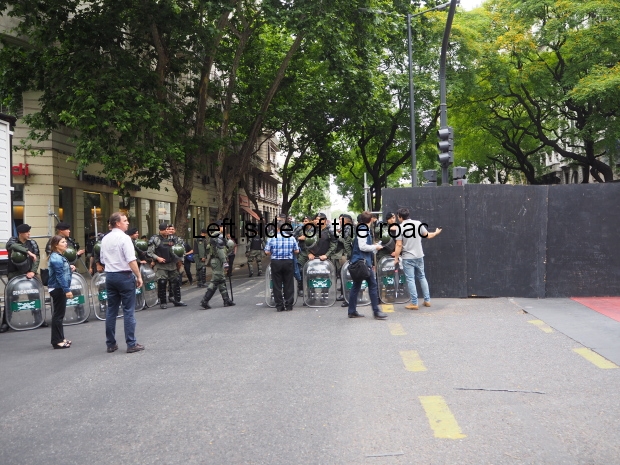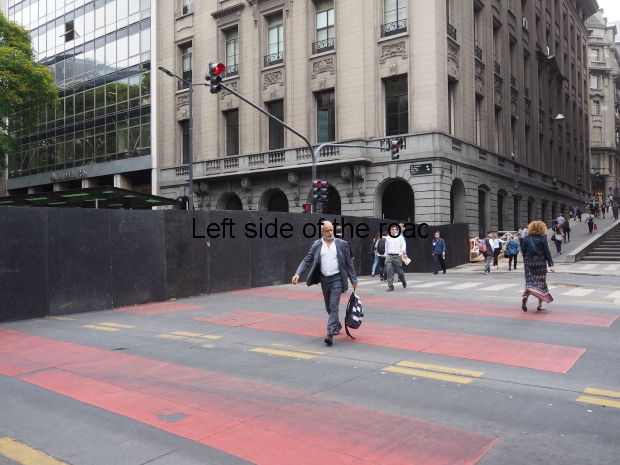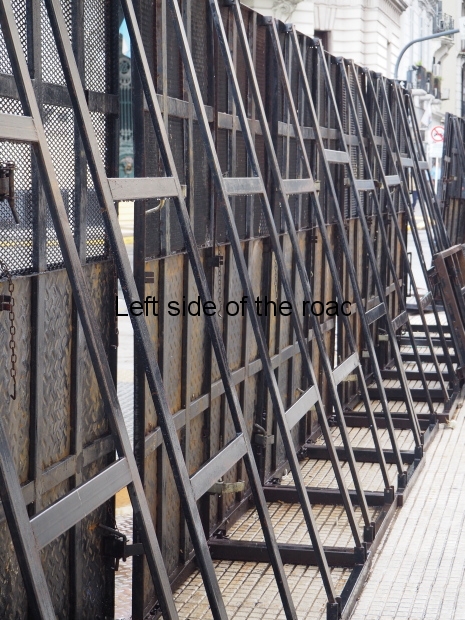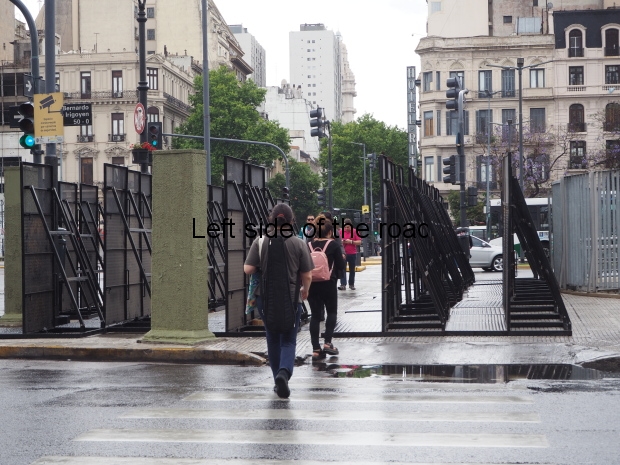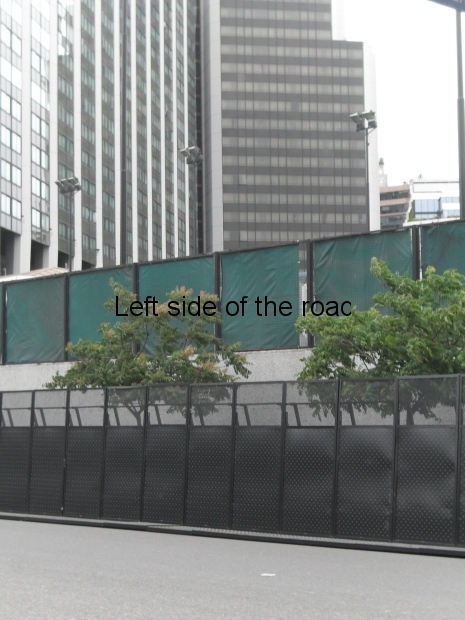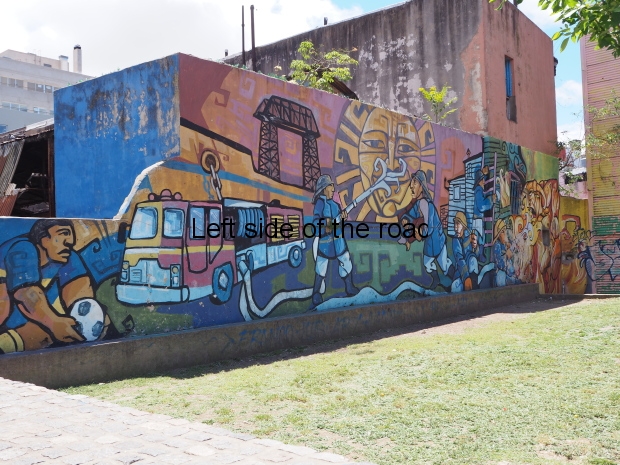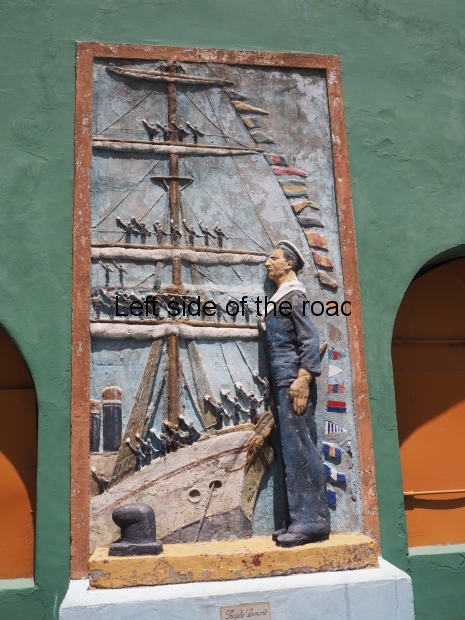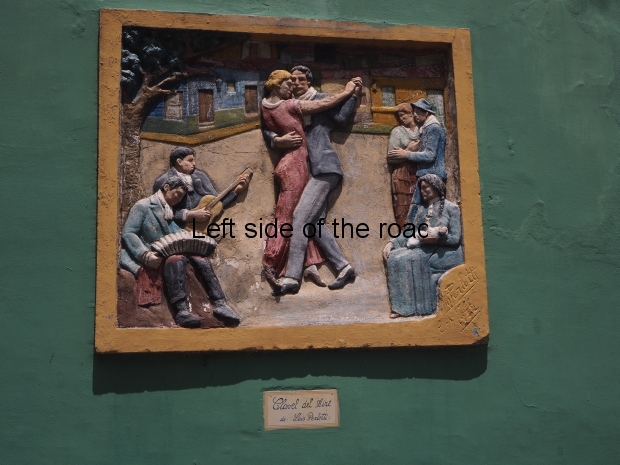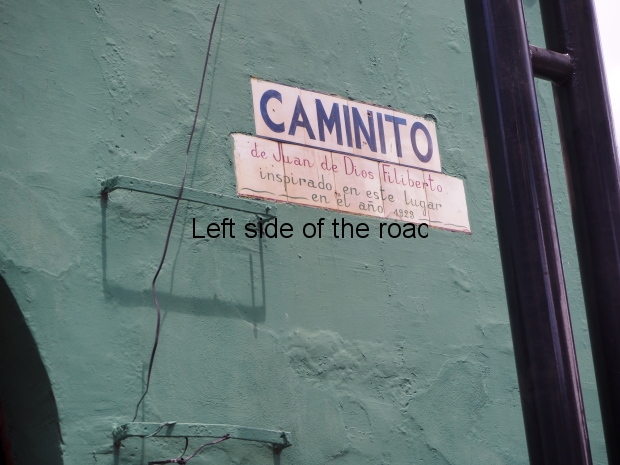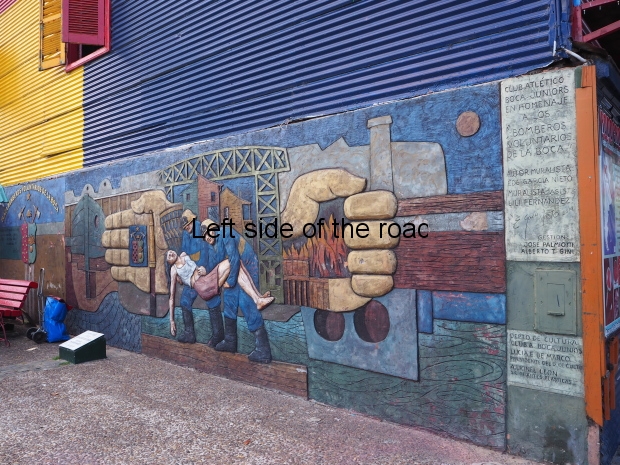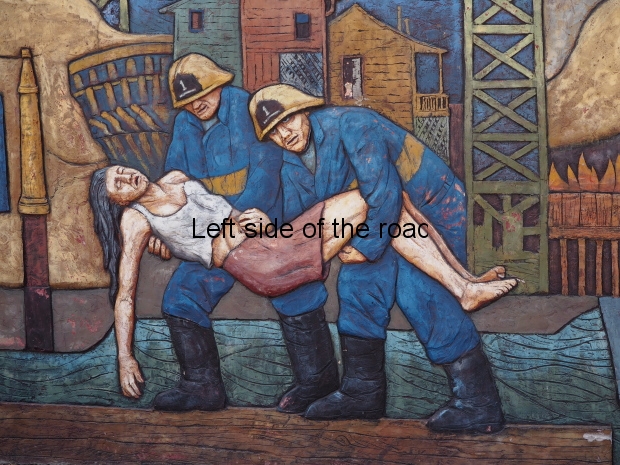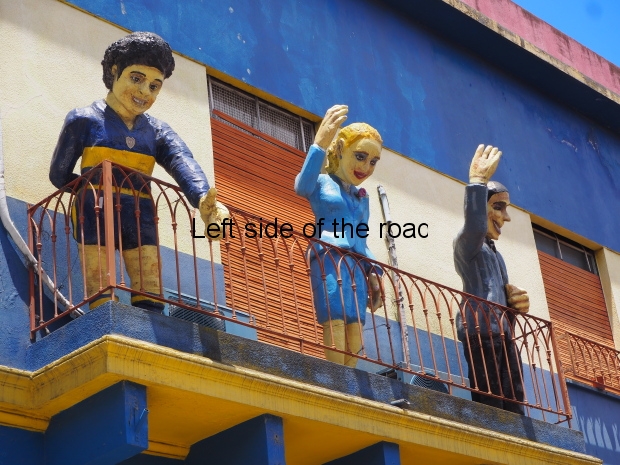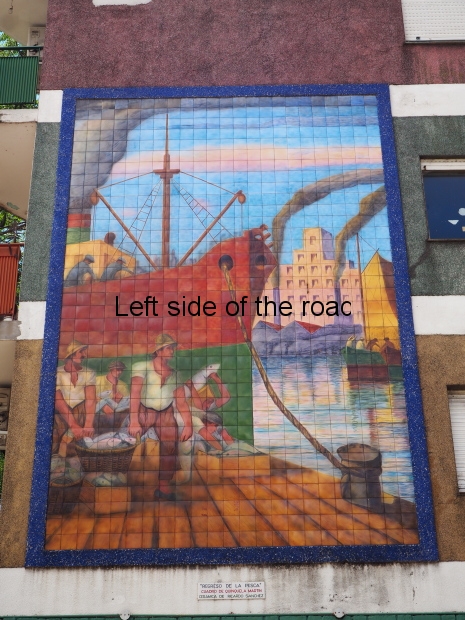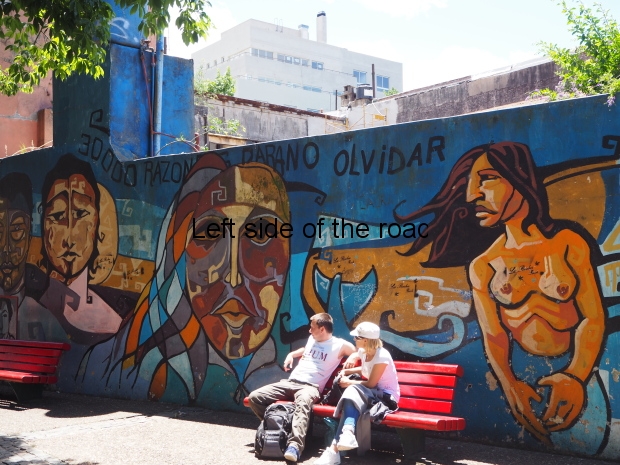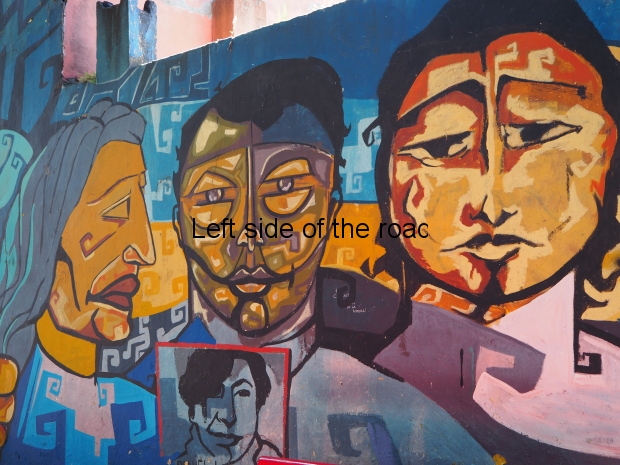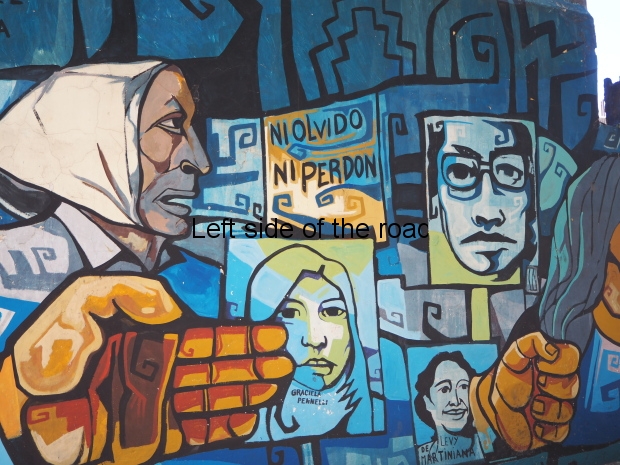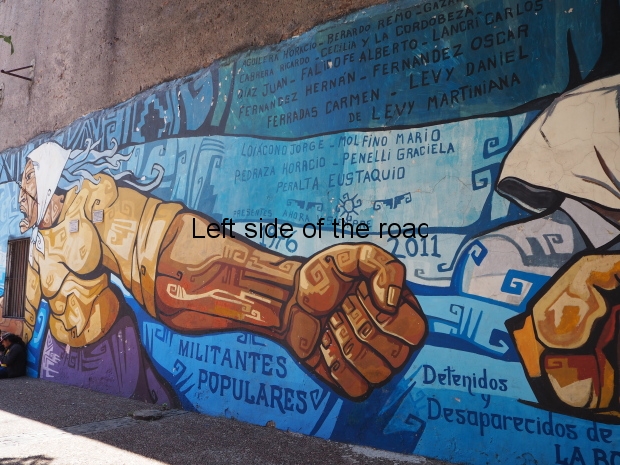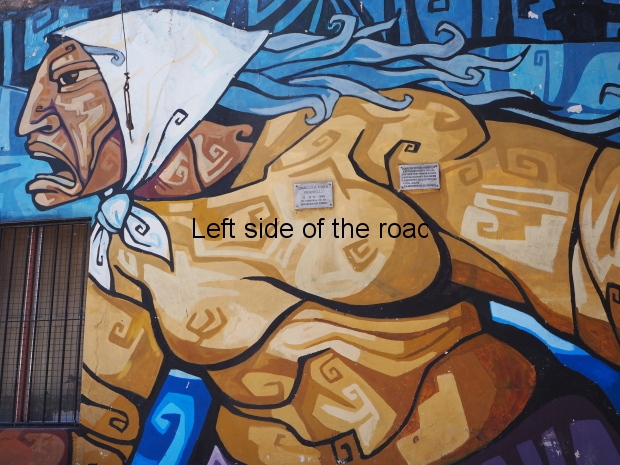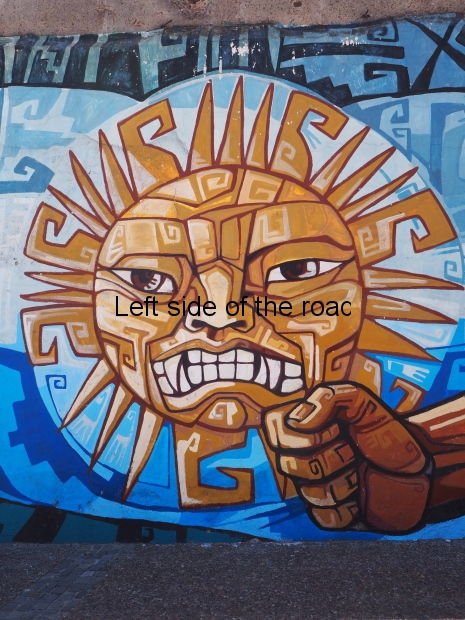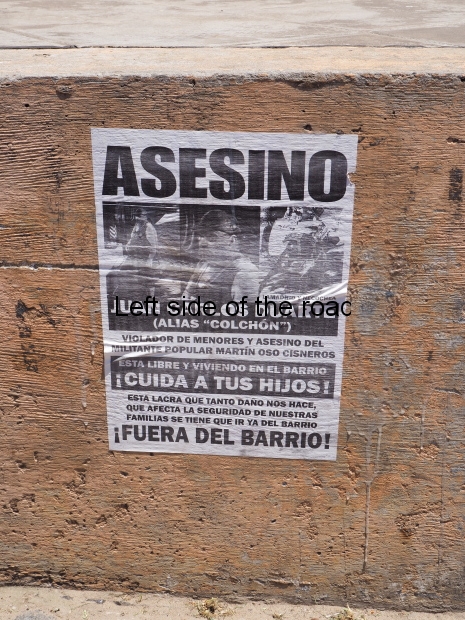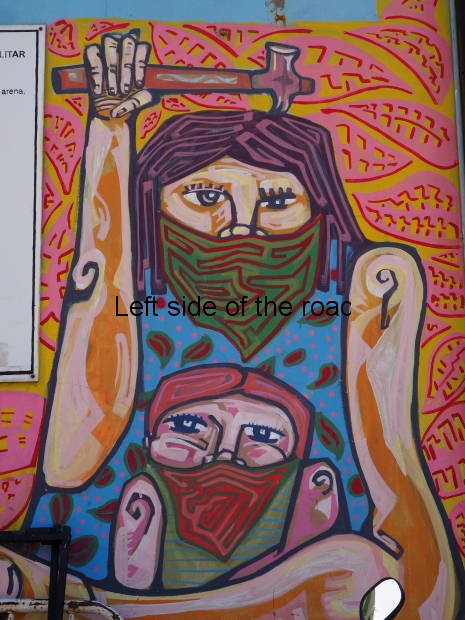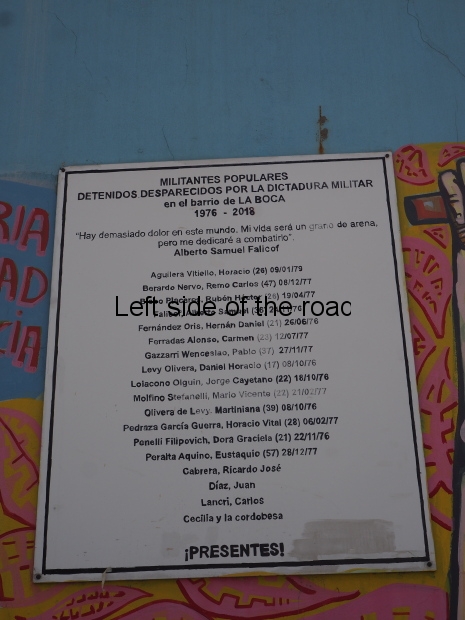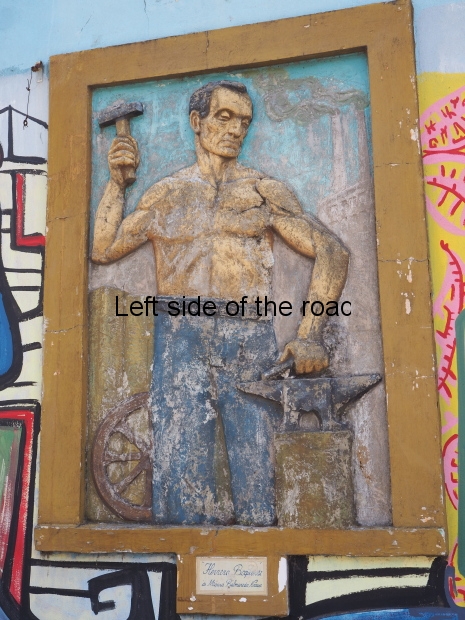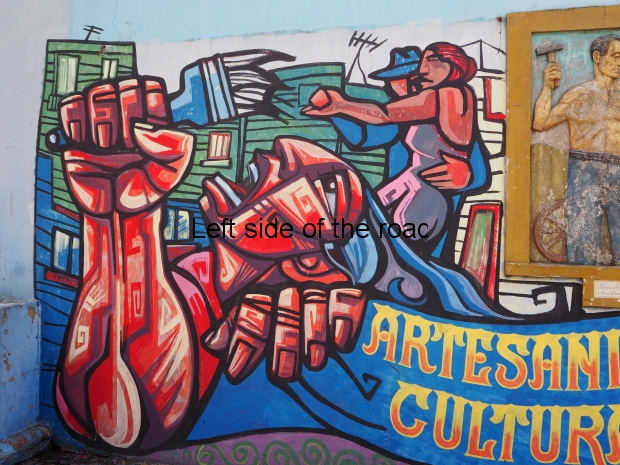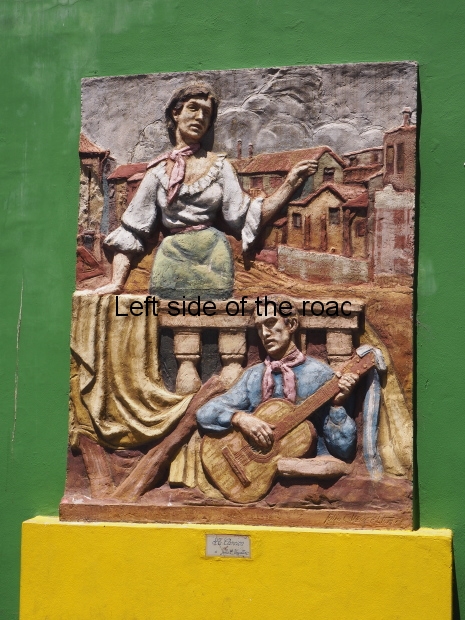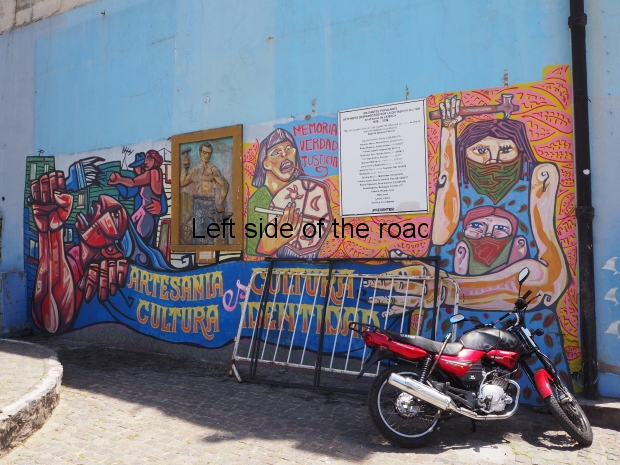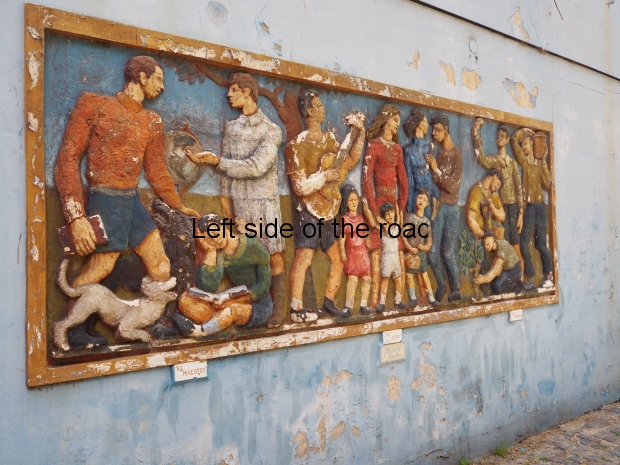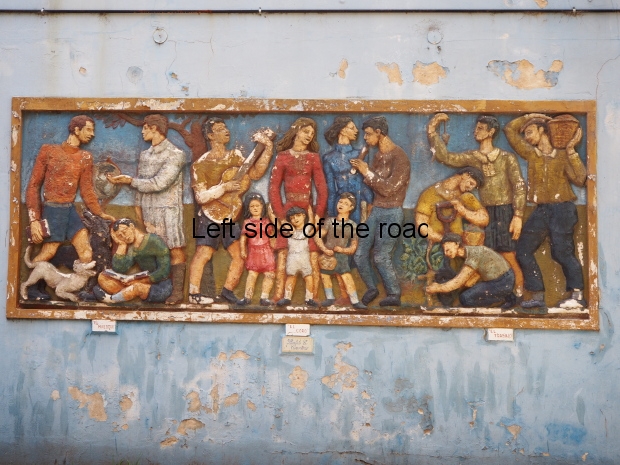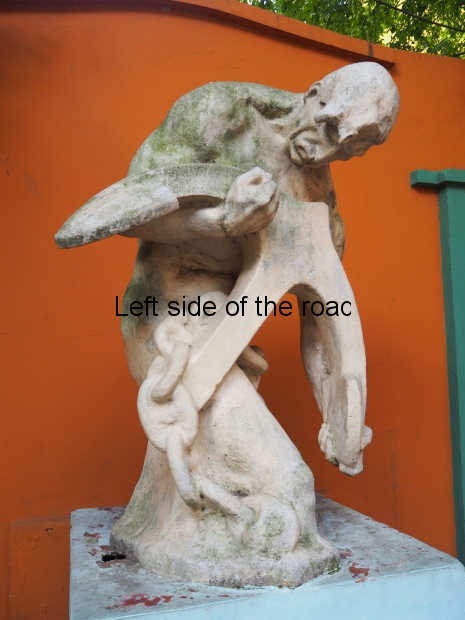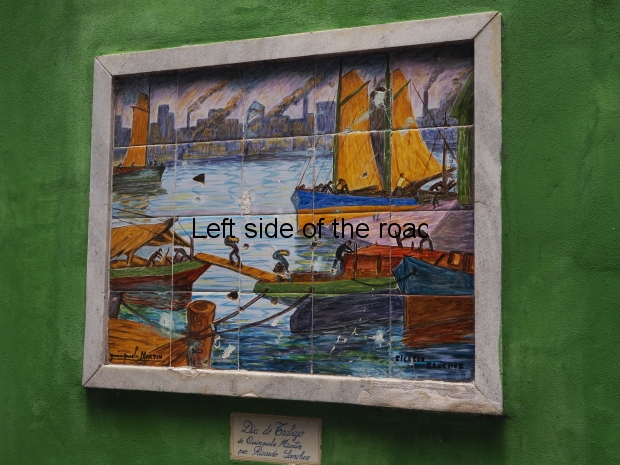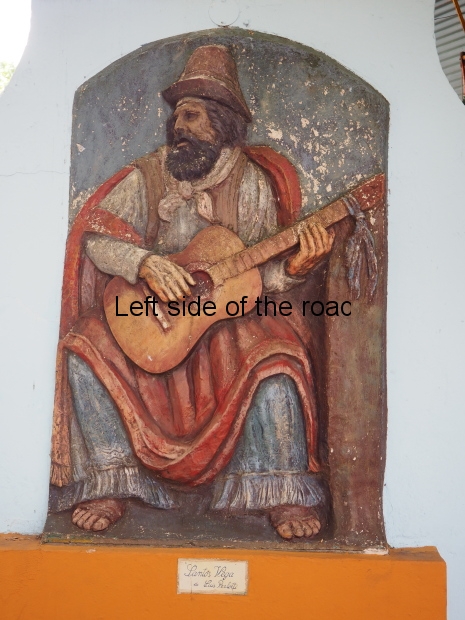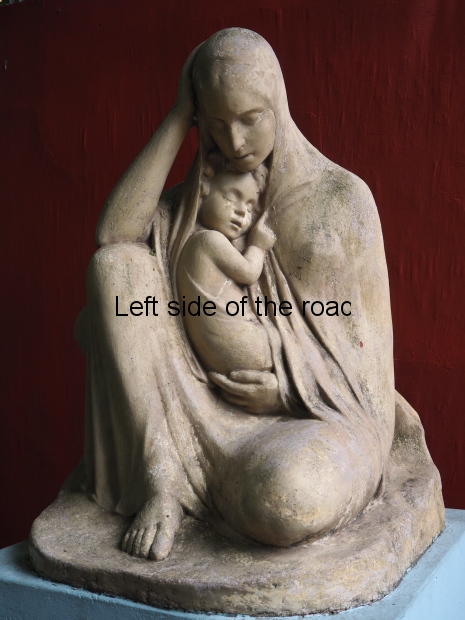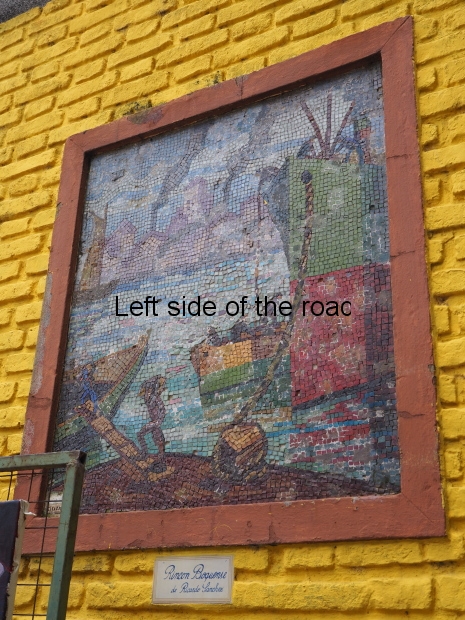
Smashing the State
More on Argentina
La Boca – street art
La Boca was, and probably still is, the most important dock area of Buenos Aries but as in other port cities the introduction of containerisation has had such a negative impact upon the labour force that the area has lost what had made it special in the first place, its sense of solidarity, community and a uniqueness which comes from being outside the ‘sophisticated elite’ that dominated the centre of the city as it expanded from the centre the areas of Palermo and Belgrano.
The fame of the Boca Juniors Football Club, involved in the ‘incidente’ of last Saturday yet still based in the area in which it was established, and the multi-coloured houses has turned La Boca into a couple of hours’ tourist destination which benefits a few but bears no relationship to the real lives of the people who live there.
The very small area with the multi-coloured, painted houses offers nothing of authenticity but merely an opportunity to make money out of tourists who can say they have entered the ‘badlands’. Poor working class areas exist throughout the world, to go any further than these few streets is no more nor less than an example of poverty porn – which might produce unwanted experiences for the unwary tourist.
Despite the tacky souvenir shops, the young women with skirts split to the waist who try to entice men in a sexy, provocative tango embrace for a photo opportunity, the singers of Gardel ballads who ‘entertain’ diners in the restaurants that take over the streets there is still a reason to visit this part of Buenos Aires.
One little street in particular, Caminito (de Juan de Dios Filiberto) is worth walking along for its examples of street art, some of which date back to the 1920’s. Many of these represent the people who lived there, where they worked and what they did as entertainment. You get the impression that anything new is there for effect rather that a true representation of the community, this small area being really taken over for tourist fleecing. I doubt if many dockers and their families live in these houses any more.
Some of the sculptures, bas reliefs, mosaics are not the best examples of their kind but some are quite charming. There is a series of stone bas reliefs that depict the different tasks undertaken in the past by those related to the docks which wouldn’t be out of place in post-Socialist societies. Figurative art under capitalism can celebrate workers but has no message or purpose other than representation.
However, there are two murals, relatively recent, that seek to remind the viewer of what happened under the military dictatorship of the 1970s and what is euphemistically referred to as the ‘disappeared’.

Craftmanship is culture
One is on the wall beside the official monument to the Argentine struggle for independence from the Spanish.
This is not treated with the respect it deserves, a movable street barrier and framing from one of the street stalls resting against it – which can’t do the paint work a lot of good. I can’t really understand its full message.
It’s painted around one of the series of bas reliefs mentioned above – this one is of a blacksmith. Incorporated into the mural is a white board, on which (in black letters) is a list of fourteen names and the dates they were last seen. These names are under the heading of left-wing militants, from La Boca, who were murdered by the military between 1976 and 1979. However, there were more than 30,000 so-called ‘disappeared’ throughout the period of the military dictatorship and this number seems surprisingly low for a predominantly working class neighbourhood. An interesting aspect of this board is that 1976 is the start date for State sponsored murder but the end date is 2018. From what I wrote about the demonstration last Monday it is clear that even under a so-called ‘democratic’ government workers representatives are being routinely murdered.
Neither do I understand the imagery. The words, ‘Artesania es Cultura, Cultura es Indentidad’ (Craftmanship/handicraft is culture, culture is identity) I can accept but I’m not sure how that fits in with the only other words in the mural, ‘Memoria, Verdad, Justicia’ (Memory, Truth, Justice).
On the right hand side there’s what I assume is a mother and her female child, both of them have a scarf over their mouths. The woman holds a hammer above her head in her right hand and her left arm is wrapped around the child (in a protective manner) and that hand holds a banner with the words about culture and identity.
To the left of this pair is another female figure, who is singer the words memory, truth and justice whilst banging a tambourine.
On the right hand side there’s a couple dancing the tango – probably the image which is most used to represent Buenos Aires – in front of the skyline of La Boca with its wooden buildings. But the largest part of this section is taken up with the image of a male figure, head thrown back, screaming. In his right hand he holds a large paint brush and his left hand is holding the other end of the banner.

30,000 reasons why we shouldn’t forget
There’s another, larger mural dedicated to the ‘disappeared’ at the top end of the square which is at the end of the Caminito. This is much larger and also much more angry in its images. It shares stylistic similarities to the smaller mural so might well be by the same painter – I didn’t see and signature. It is also quite recent and has suffered from a certain amount of ignorant graffiti.
This mural consists of a number of faces with names attached, being militants from La Boca who were murdered in the 1970 – and possibly to date.
On the right of the mural there’s an image of a woman naked from the waist up. In fact the majority of the images are of women, the largest of whom is really angry and whilst motioning to the viewer to join in the struggle with her left arm stretched back behind her her right fist is smashing into the Sun of May, the symbol which is in the centre of the official Argentinian flag.
But this sun is not beneficial, the warming rays depicted on the flag being replaced by vicious and sharp spikes which harm the people.
The pre-G-20 Summit
I don’t know, and care even less, about how this meeting is being reported in the UK. Yesterday morning on a Argentinian TV station they itemised what some of these leaders of ‘the free world’ were bringing with them.
Not surprisingly Trump was arriving with half a battalion of thugs and an armoured car (called ‘The Beast’ – and which arrived on a military aircraft some time during Wednesday). Obviously he will never travel in it, why advertise his location when it could be a target? He will be travelling in a Ford Fiesta, until he needs the photo call.
Putin and Merkel, if I got it right, are staying in the same luxury hotel – if not the same then very close to each other. Putin is bringing his own cook (presumably a food taster as well – if you can’t trust the cook then you need someone else to be the fall guy if your trusted cook can’t be trusted) plus his own team of snipers.
I can’t tell you what the British Prime Minister is demanding (apart from a walk in fields of gold) as Argentine TV didn’t think the UK was worth mentioning – even though they did mention Macron, from France, who wants, it seems, vegetarian food. Really getting into the culture in a country which survives on the slaughter of millions of animals each year.
More on Argentina
Previous Next



